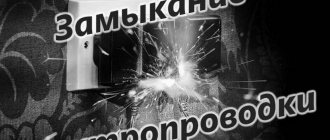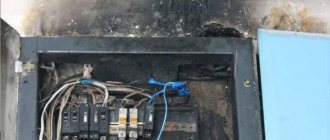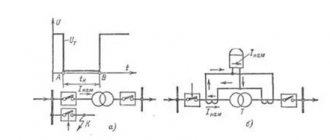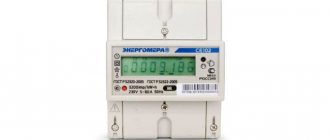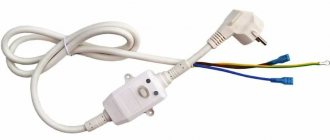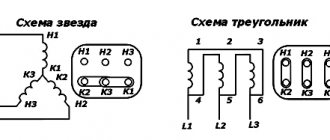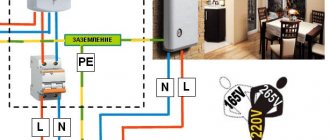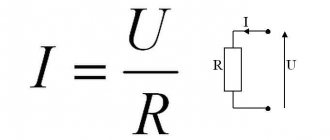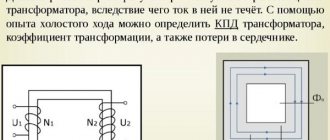Short circuits are the most common problem during emergency operations. A short circuit can occur in either a continuous or temporary electrical circuit.
In temporary electricity, short circuits can occur in both single-phase wiring and a three-phase circuit.
Interphase short circuits are a connection between two different periods, and the most common one is an overvoltage of 380 W between periods.
Single-phase short circuits are typical for wiring where there is a separate neutral. In addition, they represent a disconnection of the phase network and the neutral or the grounding period.
But most often the concepts “to ground” and “to zero” in isolated neutrals are considered one and the same. Such phenomena are called interfacial short circuit.
Concept and reasons for closures
The cause of the short circuit, as a rule, is a violation of the insulation of the wires.
An interphase short circuit of electricity in multiphase circuits is the unintentional connection of insulated conductors with a damaged protective coating.
In some cases, it manifests itself as a single-phase fault to the ground or the body of operating electrical equipment.
This state of the electrical network is a violation of the normal operating mode of the system and is interpreted as an emergency. In this case, at the points where two conductors short circuit or at the points of their contact with the ground, the current increases significantly. Its maximum value sometimes reaches several thousand Amperes. Uncontrolled flows of electricity can lead to devastating consequences.
The causes of emergencies in high-voltage electrical networks are:
- Damage to the protective insulation of each phase conductor due to violations of the operating rules of cable lines.
- Accidental break of one of the cores of an overhead cable and its short circuit to another wire or ground.
- Short circuit of a wire with damaged insulation to the body of an operating electrical installation.
Each case of a short circuit is a consequence of a gross violation of the rules for operating electrical equipment and, in accordance with the requirements of regulatory documents, requires a thorough investigation.
What happens if two phases are shorted?
- list of messages
nothing, zero - it’s zero in Africa too.
A short circuit, that's what will happen.
It is possible to use different terminals in the machine, but in no case to one, 380 volts, it will shy away, it won’t seem enough.
This is what I was talking about! but the electrician said it was possible!
Phone and laptop chargers burned out. that's why!
probably supplied 2 phases via 2 wires
then everything burns out.
tin, 2 phases on 2 wires, huh.
in a 3-phase network,
between any one of the phases and the neutral wire - 220V. between any two phases - 380. These 380 are obtained from two 220V phases by addition. but the sum is not 440 V, but attention, - due to the shift of 120 degrees between the phases, it turns out exactly 380. (if the phase shift was 180 degrees, then it would be 440 V) this is more clearly seen in the vector form of representing the process: draw a 3-ray Mercedes star (rays at 120 degrees). then the distance between the center of the sprocket (neutral wire) and the end of any beam (phase) will be 220 V. if you draw the rays on a scale (ray-phase 220 cm), then the distance between any two ends of the rays (phases) will be exactly 380 cm (volt).
so not only your chargers should have burned out.
and that electrician who put 2 phases together on one contact should be driven away with a filthy electric broom!
Is this how they connected it to Gorky 96?
and then we also had such a case
Please explain why two different phases lead to a short circuit. What exactly is happening.
Types of emergency circuits
According to the type of power supply, all short circuits are divided into damage that occurred in single-phase or three-phase circuits, and according to their number - into single and double short circuits. The simplest case is single-phase lines, in which only a single phase to neutral or ground is possible. A three-phase short circuit has a greater range of possibilities, since the number of wires in the cable increases to 3. The following types of damage are possible:
- Shorting two high-voltage wires together.
- Short circuit of one wire to neutral or ground (single-phase short circuits).
- Contact of two conductors with the ground surface at once.
In each of these cases, including two-phase ground faults, the fault in question manifests itself in a special way, characterized by spreading currents and distributions of emergency potentials. In addition to these factors, the current process is described by such an indicator as touch voltage. This parameter represents the voltage applied to the human body between two points of contact with the bare wire.
The same type of dangerous effects includes the potential difference that appears between parts of the body in contact with a bare wire shorted to ground. With single-phase short circuits, the question of what value the touch voltage reaches when a phase is closed is of particular interest. According to the provisions of the PUE, this indicator depends on the distance between the contact zones and increases with its increase.
In some cases, when the resistance to the flow of current to the ground is too high, the contact voltage reaches a value that is dangerous for humans.
Scientific forum dxdy
| Login Registration | Donate FAQ Rules Search |
Basic question about electric current
These are childish questions, but no matter how much I google/use textbooks, no one can give an accurate, normal answer. It feels like no one knows. And I just want to figure it out out of interest. Please either answer or provide a link to some book where all these questions can be clarified.
Current occurs when a potential difference closes. Does the earth have potential or not? (I've read a lot of different options - 0, +, and -) If so, which ones? One wire from the socket is known to be phase, and the other is zero. They say that the one that is zero goes to the power plant into the Earth. I read a lot of different stories on Google: 1) If a phase from the socket is shorted directly to the ground, then the current will flow through the ground to the power plant, because the earth is a conductor, and there you see one of the wires is stuck into the ground. 2) . the current will flow to the core of the earth. and others. What is it really?
Further, if you grab a phase from the socket with one hand, and take a metal stick with the other hand (without touching anything), will it give you an electric shock? If so, probably for a short time? The potential of the stick is zero? And the phase is not zero. So there will be current?
To begin with: “ground” is the point in the circuit from which potentials are calculated. Only potential differences have meaning, and the place where the potential is zero is chosen for reasons of convenience.
When the rocket is already flying, the designations in its electrical circuit do not change, but no wire stretches from its “ground” to the ground
When it comes to things in the description of which the word “potential” and the same root appear.
Some people cannot come to terms with the fact (I remembered this topic on another forum) that when solving the two-body problem, the law of conservation of energy includes a negative one - how is that? - potential energy.
A resident of the fifth floor falls out of bed in his sleep, and a resident of the first floor also falls out of the same bed. They get the same injuries. Like this? - after all, they have different potential energy (I mean - in construction terms - relative to the “zero cycle”) - I’m already using sarcasm to sum it up.
Electric potential is also a quantity that is “relative to something.”
Well, and finally, potential difference has a physical meaning.
Consequences of short circuit
Dangerous manifestations of an interphase short circuit of a three-phase circuit (as well as a single-phase circuit) include consequences associated with the flow of extremely high currents in the line. They naturally cause the following emergency situations:
- A fire occurs due to melting and strong heating of the insulation of phase conductors.
- Failure of power equipment connected to the damaged line.
- Electric shock to a person who accidentally finds himself in the area of an emergency circuit.
When moving in this area, it is important to take into account the so-called “step voltage”, which is formed due to the leakage current spreading into the soil between a person’s legs. This indicator is counted between his feet when moving near a cable that has fallen to the ground. It can also reach dangerous values, especially during accidents in high-voltage overhead lines of 6.3-10 kW. Therefore, the PUE is prescribed to move in these zones with a characteristic goose step: the foot is placed closely to the foot.
The main condition for reliable protection against single-phase and two-phase short circuits in 220/380 Volt power lines is high-quality insulation that can withstand test voltages of up to 1000 Volts. The value of its resistance, according to the PUE, must be at least 0.5 Mohm for each phase. To prevent fires and equipment breakdowns, special protective devices are installed in the power circuits, ensuring instantaneous shutdown of the line when a short circuit occurs. Such devices include:
- Linear automatic fuses.
- Current punches and high-voltage relays.
- Current protection circuit breakers and others.
With their help, it is possible to prevent the destructive consequences of phase faults, which sometimes occur for reasons beyond a person’s control.
Thanks to the timely adoption of appropriate measures, it is possible to preserve the integrity of material resources, as well as to protect operating personnel from electric shock.
Search for damaged area
If calling and waiting for a professional technician is not an option, then the owners themselves have to inspect the entire electrical network - open sections of wiring, as well as connected household and special appliances, including network extension cords. Before the operation, the electrical circuit is de-energized, turning off the machines that did not work, then the plugs of all household appliances are pulled out of the sockets.
How to find a short circuit in hidden wiring? The ideal option is to have an electrical wiring plan, but homeowners often do not have these documents on hand. Sometimes they are completely useless, since a drawing and a real diagram are “two big differences.” The reason is the entrepreneurial spirit of electricians during the construction of the facility. Therefore, more often than not, owners are forced to carry out “research” in rather thorny ways.
The first symptoms are a burning smell and blackening (burnout) of the area where the short circuit occurred. When inspection of visible wiring, junction boxes and sockets with switches does not bring results, they move on to checking household and lighting fixtures. If in this case the searches are not successful, then the research continues. It includes several stages.
Preparing to search for damage during a short circuit
How to find a short circuit in hidden wiring? First of all, provide a condition under which the search is possible at all. If in the event of a network break the operation sometimes does not promise any difficulties, then in the event of a short circuit you have to act differently, since when voltage is applied the machine simply turns off.
The exception is the burning out of the wires going to the switch or socket. It is easy to check whether this has happened with an indicator screwdriver: just make sure that there is a phase in the device. If it is, then we can say that at least one conductor is in order. Finding a neutral break is very difficult if you have no experience in such work. In this case, it is recommended to remove the section completely and then replace it with new wiring.
To prevent a short circuit that prevents power from being restored, it must be prudently excluded from the “scenario”. Since a short circuit is most often a contact between the neutral and the phase, one of the conductors is disconnected. Usually it becomes the neutral wire, the insulation of which is blue or light blue. It is disconnected, isolated, and then taken aside.
We must remind you once again that before this operation all electrical appliances must be unplugged from the outlets. If there are no more “injured” sections in the network, after eliminating the zero from the circuit, the machine will not operate.
Finding the short circuit
The first step is to determine the problem area, since a short circuit in hidden wiring can only be found after the technician determines exactly where it occurred.
In houses or apartments, the wiring principle is the same: from the distribution box, the wiring radiates to the sockets, and separate cables are provided for switches. The work is much simpler if the owners have a wiring diagram at their disposal. But more often it is absent.
First, the junction box is opened, then the resistance and voltage are measured on each line. If a line is found where there are no readings, then this is the area that needs to be checked. The next stage is searching for a specific location of the short circuit.
Help from measuring instruments
The best option is to check the resistance on the “suspected” section of the circuit (or insulation) with a megohmmeter, since the multimeter has one serious limitation. Due to the low voltage, it is only suitable for examining short sections of electrical circuits - up to 3 m, but no more.
The megohmmeter is connected with one wire to the phase conductor, the other to zero, then to the phase and ground. If the display shows a value that is less than one (0.5), then we can state that everything is in order with the wiring. When a different number (1) appears on it, or the indicators change, this means that the bare conductors are touching in some place.
Finding the culprit among household appliances
It is not uncommon for short circuits to occur in electrical appliances. To accurately determine its source, the exclusion method is used. First, absolutely all household appliances are disconnected from the sockets, then the operation of the machine is restored. All devices are connected one at a time, one at a time. The culprit will be found when the machine is triggered.
Folk method
In this case, it is important for the researcher to have good hearing, since in the place where the short circuit occurred, a sound should be detected - a quiet crackling sound. However, this option refers to the “old-fashioned methods”, so you can hope for a result, but you don’t need to rely heavily on the fact that it will happen
Phase-to-phase short circuit of a high-voltage line: methods of protection
In supply circuits with an operating voltage of over 1000 Volts, it is not allowed to use automatic disconnectors, since when their power contacts are opened, a high-power arc is formed. In this case, oil, vacuum or gas switches are used to switch lines.
Relay circuits are also used to protect high-voltage networks. They are distinguished by their simple design and are converting devices that operate according to Faraday’s law of induction - inducing an e/m field. The relay equipment that provides protection of high-voltage lines from overvoltages is based on a current transformer. With its help, it is possible to control the amount of current in the emergency line and, when it reaches the limit value, generate a signal that goes to the winding of a powerful electromagnet. This protective device, after being triggered, disconnects the entire supply circuit from the power supply.
Regardless of the availability of switching equipment, the main method of protection against phase-to-phase and three-phase short circuits is the use of cable products with high-quality insulation. If this condition is met, any high-voltage line can withstand short-circuit currents many times higher than the permissible limit.
Intended Use
A short circuit is justified only in some cases, namely:
- To de-energize a section of a circuit where a person is exposed to dangerous voltage. If a person falls under a dangerous potential, and there is no RCD in the circuit, and the circuit breaker is located far from the scene of the incident, then an artificial short circuit is performed to save the person, disconnecting the line;
- When disconnecting high-voltage circuits from the voltage source using short circuiters. A short circuiter is a switching device that has a powerful contact part, which is structurally designed and intended to create an artificial short circuit in power supply networks;
- In welding machines. The design of these devices is designed for the technological creation of an electric arc. Due to the low voltage (almost safe) and electrical connection to the ground through a welding electrode, which melts, metal surfaces are welded.
Intentional short circuit using a short circuit
Electrical energy and the short circuit that occurs in networks is a dangerous process that can lead to terrible consequences with human casualties. However, if you correctly calculate and install current-limiting devices, and also check their performance in a timely manner, then it can be controlled. A quick response of high-quality protective equipment to a short circuit will prevent major accidents.
Preventive measures
Three-core power cable VVGng
The most effective and reliable way to prevent short circuits is a professional approach to solving the following technical and organizational issues:
- Selecting a suitable power cable that can withstand high current overloads.
- Strict adherence to the rules for installation and operation of electrical networks, as well as machines and devices connected to them.
- Availability of acceptance certificates for the power supply system upon commissioning.
- The use of modern types of protective equipment that guarantees immediate shutdown of the line in the event of an emergency.
Particular attention is paid to preventive measures carried out in strict accordance with the requirements of current regulations. According to the provisions regarding the maintenance of electrical networks, prevention is carried out according to a pre-drawn up plan approved by the head of a specific department. When implementing it, it is necessary to distinguish between the following types of preventive maintenance:
- Visual inspections.
- Routine and scheduled maintenance.
- Testing of electrical equipment upon acceptance and during operation.
A short circuit of electrical wires to ground is a very dangerous phenomenon that can lead to fire and subsequent fire. In addition, it is fraught with the possibility of damaging people servicing the installation with high voltage voltage. All this ultimately forces us to take special protection measures to ensure normal operation of networks in the absence of critical modes.
Yesterday the neighbors turned the phase to zero.
We prepared well for the First of April, in a word.
Everything that was connected to the network burned out - a telephone, a refrigerator, a computer with accessories, a DVD player, a receiver, three televisions. I spent 24 hours correcting the consequences of the disaster. The outcome with the DVD and receiver is still unknown. The surge protectors did not help, although the fuses on them were blown. Apparently they didn’t manage to burn out quickly enough.
How to avoid this in the future, that is the question.
| Quote |
| There is one way out - using crap (damn, it's jammed, I forgot what it's called). In short, this is a thing that looks like a high-voltage disk capacitor, on which the voltage is marked (I saw it at 270 V). |
This thing is called a varistor.
| Quote |
| Most likely, two phases have come to you - i.e. instead of 220 V you got 380. |
on 2, yes, that’s right - two phases arrived, I apparently wrote nonsense, I apologize.
interesting solution. There are several points - - prevalence, i.e. the very possibility of buying these “fuses” in our province, but this question is not for you, of course, but in general.. - after all, what is their power? Let's say the TV is pulled to 72-80 cm?
for 4 varistors, of course. it wasn’t 380, but somewhat less (the electrician said it, but I was a little excited and didn’t remember the number), but that was quite enough
Do you think such a device is worth paying attention to? https://www.netlab.ru/products/descr1_price.asp?id=2023
Maybe there are some other solutions besides varistors? By the way, how will the same UPS systems perform in such conditions? I heard that they don’t help, but I’m not sure of the reliability of this fact.
Maybe Pilot SPA will help?
“Guarantees protection against high voltage (over 250V) and protection against RF and impulse noise. Recommended for protecting home computers, computer peripherals, audio-video and household appliances.”
“Why can network voltage become dangerous for equipment? Worn wiring is the most common reason for increased mains voltage. Failure to contact the neutral wire leads to a dangerous increase in voltage, up to 380V. Another reason for 380V in the socket is incorrect switching of wires after repair work. Alas, such mistakes by electricians happen often, but it is very difficult to prove it, hold them accountable and receive compensation. A classic surge filter at voltages above 260V saves equipment only “at the cost of its own death.” The Pilot SPA circuit breaker is guaranteed to protect equipment from high voltage.”
| Quote |
| There's something I can't figure out. As far as I know, 380 V is obtained with a three-phase connection. ? |
| Quote |
| Linear voltage = root of three phase voltage |
Can I decipher it, please? Does this need to be 1.73 (the square root of 3) multiplied by 220? We get approx. 380. Right?
Those. add up the three phases (short circuit) and get 380. Right? Did I understand correctly?
What are the types of protective devices?
The classification of devices that make electrical networks safe is quite complex. For the reason that the same device is used in different areas and for different purposes. And the algorithm of their work often consists of several stages, each of which can be used for protection as the only method. The main classification criteria are:
- By area of application - to protect people or technical devices.
- According to the method of reaction - passive and active.
In the vast majority of cases, the principle of their operation is based on the physical manifestation of the action of electric current - heating or attracting metal parts into the field of action of the magnetic field generated by it.
APCS Forum
Club of specialists in the field of industrial automation
- Be sure to fill out your profile in Russian in Cyrillic
- do not write your question in the first topic you come across - instead, create a new topic
- Duplicate messages are considered spam
- for searching and offering pirated software - ban without warning
- We do not place advertising and private advertisements “buy/sell” under any conditions
What happens if you close two phases of the same name from different substations?
What happens if you close two phases of the same name from different substations?
Post by KIV » May 31, 2013, 6:27 pm
Re: What happens if you close two phases of the same name from different P
Post by Ryzhij » May 31, 2013, 9:52 pm
Re: What happens if you close two phases of the same name from different P
Posted by Jackson » Jun 07, 2013 10:47 am
Why did such a question arise at all?
Remember: you cannot do this, never, under any circumstances. Blocking from this should be as much as possible (mechanical is best, but does not cancel out electrical).
In fact, if this happens, then you will pass through your lousy (compared to the total power of both TP) cable, circuit breaker and contactor (if any) the entire equalizing current between these two TP. It can be a value from zero to infinity, without a stable state of equilibrium (we have two energy sources with astatic characteristics). Well, what will happen if such a current suddenly appears - you yourself will guess in your network where something will turn off and possibly burn out or cook.
You don’t even need to think about this possibility—don’t allow it, that’s all.
